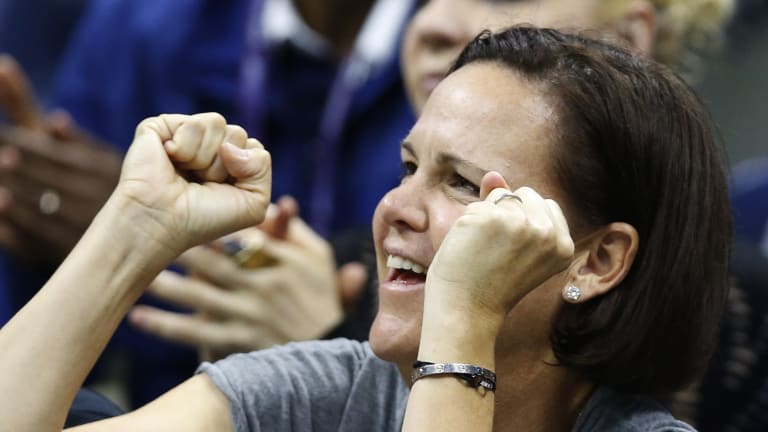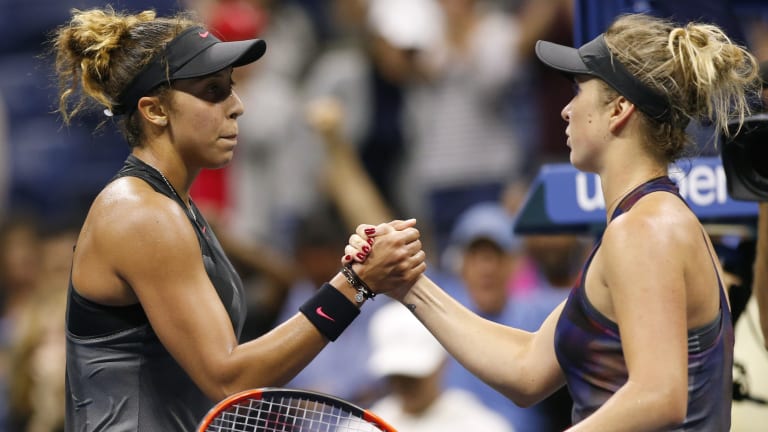NEW YORK—Madison Keys had been here before.
Midnight was approaching, and a fervent and surprisingly large crowd in Arthur Ashe Stadium was doing what it could to will her to victory in her fourth-round match against her higher-ranked opponent, No. 4 seed Elina Svitolina. Over the last two years, this round had become a stumbling block for Keys at the Grand Slams—she lost in the fourth round at all four of them in 2016, and she had lost in it at the US Open in 2015 and 2016.
At a certain point in every major, this go-for-broke player has stopped being able to simply overpower the opposition. She has, inevitably, run into a player who makes her hit too many balls, from too many uncomfortable spots. Svitolina, who has won five tournaments this year and put herself in the running for No. 1, appeared to be that opposition.
While Keys had snuck through the first set in a tiebreaker, Svitolina had run away with the second set, 6-1, and now led 4-2 in the decider. The problem for Keys was the same as it has always been: How to use the power she possesses, which is superior to virtually any of her opponents, while also making enough balls to stay in rallies. For the last hour, she hadn’t found that balance. Her down-the-line forehands landed in the alley; her backhands were driven into the middle of the net. Her shots lacked shape and she lacked the patience to change them.
“I definitely felt like I kind of hit a wall at the beginning of the second set,” said Keys, who won her last match, over Elena Vesnina, in a late-night three-setter on Saturday. “My energy dropped. Once I got broken in the third, I just kept telling myself, ‘Just try to figure it out, just get as many balls in as you can.’”


